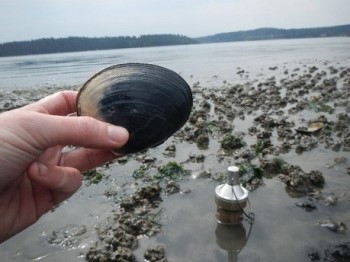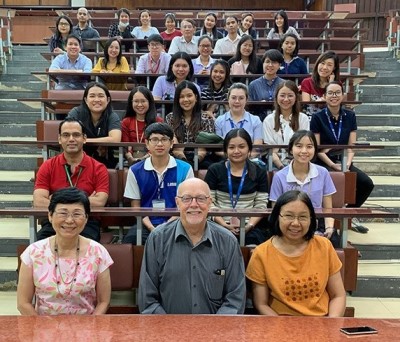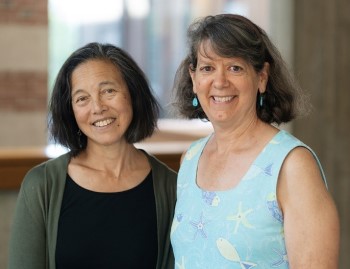Hot Off the Press
The Superfund Research Program (SRP) regularly highlights basic and applied research and activities from the program that span multiple disciplines.
Research Briefs

Identifying Key Characteristics of Chemicals that Harm Male and Female Reproduction
Researchers from the University of California, Berkeley SRP Center developed and applied a "key characteristics" framework to help risk assessors better identify, organize, and summarize the potential reproductive health risks of different chemicals. By understanding specific events that lead to toxicity, they also may be able to systematically predict whether less studied chemicals may be reproductive toxicants and prioritize them for additional study.
PCBs Alter Glucose Regulation Differently in Males and Females
Exposure to polychlorinated biphenyls (PCBs) affects glucose regulation during weight loss differently in male and female mice, according to a new SRP study. The researchers discovered that differences were related to the aryl hydrocarbon receptor, a protein involved in the regulation of various biological responses and cell maintenance in the body.
Model Predicts PAH Levels in Important Tribal Food Source
A sediment passive sampling model can be used to accurately predict the concentration of polycyclic aromatic hydrocarbons (PAHs) in butter clams, according to an SRP study. In Puget Sound, PAHs are found in the sediment where butter clams are harvested. Butter clams are an important food source and component of cultural practices for local tribes, but PAHs can accumulate in the edible portion, posing a health risk to the communities who rely on them. The research team worked closely with tribal leaders to better predict PAH levels in butter clams while having a minimal impact on this important resource.
NIEHS Environmental Factor Articles

Suk Promotes Children's Environmental Health in Asia-Pacific
SRP Director Bill Suk brought his passion for improving children's environmental health to Thailand, where he spent six months through a U.S. Fulbright Scholar Program award. At the Chulabhorn Research Institute in Bangkok, Suk organized a major meeting addressing children's environmental health problems in the region. He also lectured on international and public health and mentored early- and mid-career researchers.
Blocking Mosquitoes with a Graphene Shield
An innovative graphene-based film helps shield people from disease-carrying mosquitoes, according to a new study funded by NIEHS. The research, conducted by the Brown University SRP Center ,was published August 26 in the Proceedings of the National Academy of Sciences.
Paper of the Month: Collaborative Cross Mice Reveal Different Susceptibilities
SRP grantees at Texas A&M University found that the Collaborative Cross mouse model - which uses genetically diverse mice to capture over 90% of the known mouse genetic variations - can account for individual differences in susceptibility to environmental chemicals.

New Hampshire Arsenic Rule Builds on NIEHS-Funded Research
New Hampshire Governor Chris Sununu signed a bill July 12 that sharply lowers the state's drinking water limit for arsenic. The new rule, informed by research and outreach efforts from NIEHS grantees at the Dartmouth College SRP Center ,cuts the state standard in half - from the federal level of 10 parts per billion (ppb) to 5 ppb.
Giant Ocean Viruses Make Unique, Important Enzymes
A new study, funded in part by the SRP, found that giant viruses, which have genomes larger than 300 kilobase pairs and protein shell diameters greater than 200 nanometers, have genes that encode for unique enzymes called cytochrome P450. Giant viruses are found in deep seas and oceans worldwide. In animals, P450 enzymes metabolize drugs and fatty acids, make steroid hormones, and defend against pollutants.
Arsenic May Interfere with Pregnancy and Children's Health
During a May 28 talk in the NIEHS Keystone Science Lecture Seminar Series, Oregon State University SRP Center Community Engagement Core leader Molly Kile, Sc.D., discussed her work studying pregnant women and their children in Bangladesh to learn about effects of arsenic exposure.
SRP Risk e-Learning Webinar Series: Bioremediation - Expanding the Toolbox
The SRP is hosting a Risk e-Learning webinar series emphasizing new approaches to elucidate mechanisms responsible for bioremediation. The series will feature innovative molecular, biochemical, cellular, and engineering tools to advance our understanding of the structural and functional properties of microorganisms or plants involved in the bioremediation of hazardous substances. The first session on September 30, Bioremediation - Expanding the Toolbox: The Microbiome, will serve as an introduction to the series and will touch on opportunities to build linkages with other microbiome fields of study, such as the human microbiome.
Registration is open for all three sessions: Session I - The Microbiome ,September 30, 1:00 - 3:00 p.m. EDT; Session II - Novel Omics Approaches ,October 3, 1:00 - 3:00 p.m. EDT; and Session III - Emerging Opportunities ,October 11, 1:00 - 3:00 p.m. EDT.
Be sure to check out our past Risk e-Learning webinars ,which highlight innovative SRP-funded biological, environmental, and engineering research and tools to understand and reduce exposures to hazardous substances.
to Top



